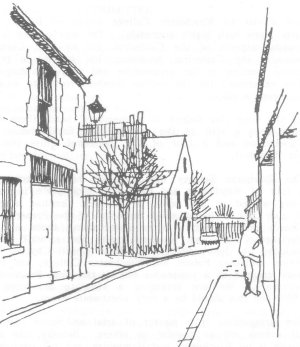Development Control - Trust Annual Report 1986

Chesil Street Redevelopment - Bridge Street Offices
The principal work of the Committee continues to be the examination of the weekly lists of planning applications to the City Council. We submit our comments to the Council, wherever the intervention of the Trust seems called for, either against or in support of a particular application. We try to heed the opinions, not only of our own Committee or of the Council of the Trust, but also of any Trust members who let us know their views. Our two Panels, one dealing with commercial applications, the other with residential properties, are led by Frank Chippindale and John Kingdon. We owe much to their hard work and efforts on our behalf.
Since last year's Report, the Trust has received a further presentation from the architects of the Chesil Street development, now somewhat reduced in size. We have also continued to discuss with the Planning Authority the development of the Henly site on the corner of St. Thomas and St. Swithun Streets. Both of these developments are now going ahead.

60/61 Colebrook Street
Two more recent applications, wnich have been the subject of presentations to the Trust, are new proposals for extending the Southgate Hotel and also the City offices in Colebrook Street. The Southgate development is an imaginative one, comprising a renovation and extension of the Southgate Street frontage with a new bedroom block at the back, filling the gap between the old hotel building and the new Law Courts higher up the slope. The result will be an attractively refurbished hotel with 60 bedrooms. The Trust, whilst making a number of architectural comments, is generally in favour of the proposed development.
The proposed Council office extension requires the demolition of 60/61 Colebrook Street - the cottages featured on the cover of the December 1985 Newsletter. The Trust has registered a strong objection to this. Although the cottages are not on the current list of buildings of special architectural or historic interest, the earliest deeds are a Lease and Release of 1831, which is within the period (1700-1840) when, according to the DoE, most buildings which survive in anything like their original condition qualify for listing.
The new building would fill the gap along Colebrook Street between the present City offices and No. 59.
The proposals caused much comment from the Trust. It was felt that other more imaginative solutions to the City's space problem could have been considered, and that small shops or even residential buildings along Colebrook Street might be more suitable. Also, the architecture was considered unduly fussy. On the plus side, it was appreciated that the view along Market Street would be improved.
The Committee keeps a close eye on appeals against planning decisions to the Department of the Environment. At the end of 1985 we attended a 3-day Public Inquiry into an appeal against a City Council decision not to allow No. 32 Southgate Street (the old Hampshire Club building) to be turned into offices. We supported the Council on the grounds that there were already sufficient offices in the area still seeking tenants, and that the extra car parking involved would not only increase the traffic along St. Thomas's Passage, but would remove one of the few remaining gardens behind Southgate Street. Sadly, this appeal was upheld by the Inspector, and the office conversion will now go ahead.
As the Committee continues with its routine work, it tries to concentrate on those issues which are important to members. It cannot and would not want to concern itself with every little proposal put forward, many of which indeed serve to improve the amenities of our developing City. Meanwhile, the views of members are always welcome, either verbally or in writing, about any planning application which arouses their concern.
